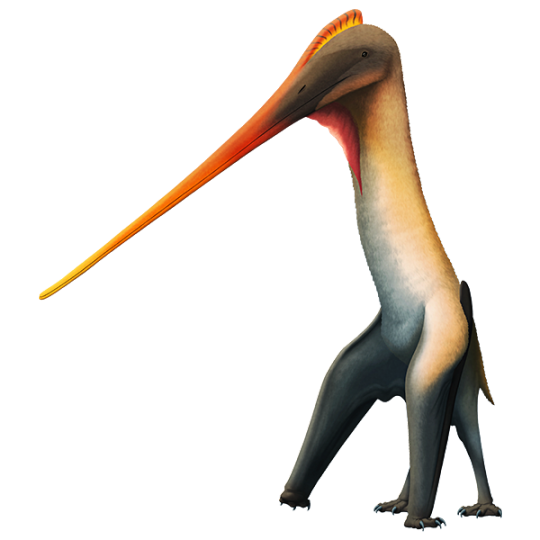#leptostomia
Explore tagged Tumblr posts
Text

Leptostomia begaaensis
184 notes
·
View notes
Text
Time for the monthly drawing recap!
In this month:
- David witnesses the food chain in action as a salt lion catches a Hesperornis
- Johanna and Hilda are about to be caught between old rivals: a Nanuqsaurus and a Pachyrhinosaurus
- with the help of a water spell, Frida helps an Asterosteus, along with other small creatures, to return to the sea
- David gets some voluntary work done by helping to count how many baby Arkansaurus have hatched
- Hilda gets a ride on her mum's shoulders as a flock of Leptostomia fly above them





#drawing#hilda the series#hilda netflix#hilda fanart#dinosaur#prehistoric fish#pterosaur#david hilda#johanna hilda#hilda hilda#frida hilda#hesperornis#Nanuqsaurus#pachyrhinosaurus#Asterosteus#Arkansaurus#Leptostomia
10 notes
·
View notes
Text


get u a clade that can do both,, ........
#my posts#extremely sleepy thinking about pterosaurs#i found out abt leptostomia and now i want one ....#why don't we have fuzzy non-avian pocket reptiles anymore. i want a jeholopterus#i also want a cryodrakon but I do recognize that one as a bad idea
9 notes
·
View notes
Text

Leptostomia begaaensis, a pterosaur with a such weird beak shape that at first it wasn't even identified as one. They were quite small and similar to today's sandpipers.
Let's ignore that a donut couldn't possibly exist during the Late Cretaceous. The colors were based on similar long&thin-billed birds like sandpipers, ibises, curlews, avocets, oystercatchers and limpkins.
#digital art#original art#paleoart#paleoblr#pterosaur#cretaceous#paleomedia#artists on tumblr#digital artist#small artist
1K notes
·
View notes
Text

Another sketch from the #paleostream
Elosuchus vibing in shallow, coastal water with some Leptostomia on it's back. Kem Kem do be like that.
(btw, there is NO Sarcosuchus from Kem Kem other Spinosaurus localities)
320 notes
·
View notes
Text

Leptostomia begaaensis
265 notes
·
View notes
Photo

Leptostomia begaaensis here is a recently-discovered pterosaur that lived during the mid-Cretaceous period, around 100 million years ago.
Its fossil remains were found in the Kem Kem beds of Morocco – ancient river deposits famous for yielding some of the newer specimens of the bizarre aquatic dinosaur Spinosaurus – and consist of just a couple of small pieces of jaw bones.
But those fragments are rather weird for a pterosaur.
While it's hard to tell for certain from such meagre remains, Leptostomia might have been part of the azhdarchoid lineage, related to both the elaborately-crested tapejarids and the terrestrial-stalking giants like Quetzalcoatlus. And if it was indded an azhdarchoid it was an especially tiny one, possibly the smallest known member of the whole group. Based on the proportions of its relatives it would have stood just 30cm tall (1') with a wingspan of 60-70cm (2'-2'4"), roughly comparable in size to a modern pigeon.
And it had an incredibly long beak that tapered to a thin delicate tip, resembling the beaks of modern probe-feeding shorebirds more than any other known pterosaur. It may have been specialized for the same sort of ecological niche, poking around in mud and shallow water for small invertebrates and snapping them up, possibly detecting its hidden prey using super-sensitive nerve endings in the tip of its beak.
———
Nix Illustration | Tumblr | Pillowfort | Twitter | Patreon
#science illustration#paleontology#paleoart#palaeoblr#leptostomia#azhdarchoidea#pterodactyloidea#pterosaur#archosaur#art#convergent evolution#honestly wouldn't be surprised if the rest of this thing is also super weird#but the 'he beak too big for he gotdamn body' look is just too funny not to do
1K notes
·
View notes
Text

Leptostomia the snipe dragon.
6 notes
·
View notes
Text
L'osso del becco di uno pterosauro appena scoperto ci rivela l’incredibile varietà di questa specie
L’osso del becco di uno pterosauro appena scoperto ci rivela l’incredibile varietà di questa specie


L’impressione artistica della leptostomia begaaensis.
È stata scoperta una nuova specie di piccolo pterosauro, di dimensioni simili a quelle di un tacchino, che si differenzia da tutti gli altri pterosauri scoperti finora per il suo lungo e sottile becco senza denti.
Il pezzo di becco fossilizzato è stato un ritrovamento sorprendente e inizialmente si è pensato che facesse parte della…
View On WordPress
0 notes